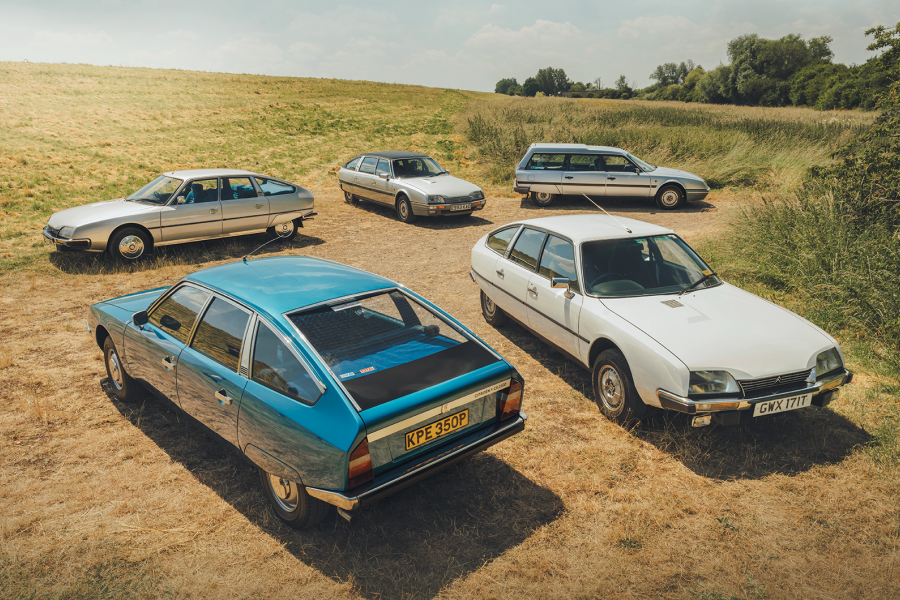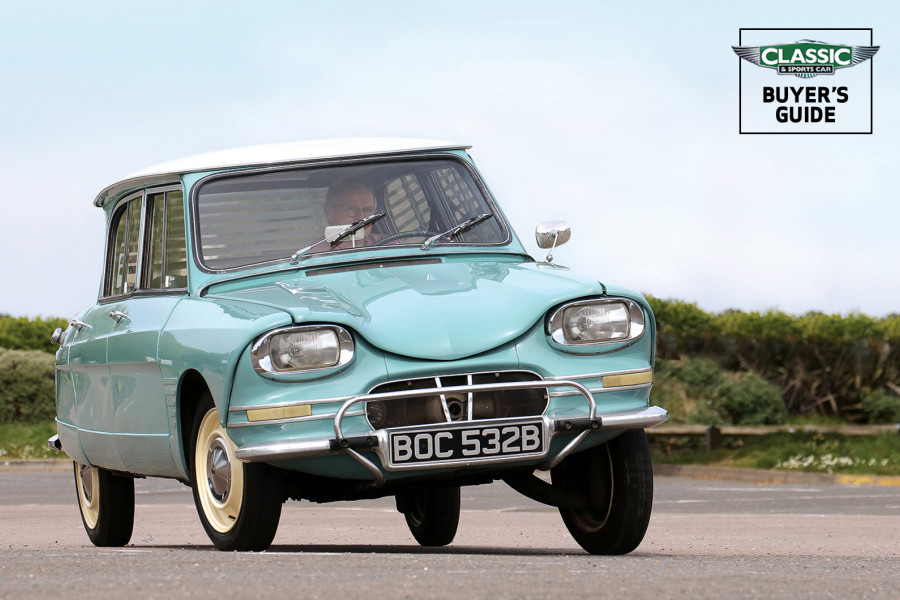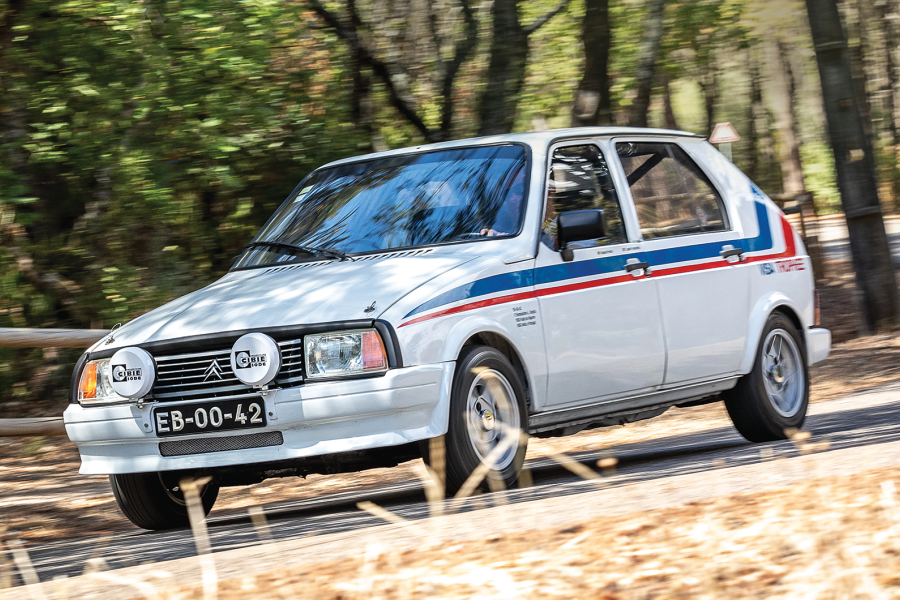While not so stylish or well detailed as the SM, its cabin is in reasonable taste but much roomier, with huge amounts of floor space in the front and doors that are so wide the rear passengers get their own handles.
With the centre armrest in place, the ‘Strato Bench’ holds you surprisingly well in quickly taken corners. It is electrically adjustable six ways via a command console on the driver’s armrest.
With all four power windows dropped there is a lovely airy atmosphere to the Toronado, but not much to do or think about; simply select Drive, depress the (extra-wide) throttle pedal and let the velvety torque unleash effortless acceleration.
Sit back now and watch the numbers come up in a spinning drum speedo that makes the instrument panel appear like a fruit machine.
While the resulting thrust is not quite in the muscle-car league, it wafts the Toronado up to three-figure speeds in short order, with the option of lighting up the front wheels for a yard or three if the mood takes you.
Flat-out, the big Oldsmobile cannot match the slippery SM’s top end but will equal or exceed its rate of pick-up through to 100mph (according to period test figures), and does it with a lot less noise and fuss – just a remote hum, the occasional gurgle from the Rochester four-barrel Quadrajet carb and a pleasing lack of wind or road noise.
All of which is impressive, if pretty much what you would expect from an American personal luxury car of the ’60s.
What you don’t expect is the flat cornering attitude; the reassuring sense that you are being pulled through corners as you guide this massive car accurately with fingertip-light steering but no feel or feedback.
In fact, the Toronado tracks so faithfully and reassuringly at all times and changes direction so cleanly and willingly you begin to think that feel is a bit overrated.
What’s more, there is nothing boaty or wallowy about the Oldsmobile’s firm ride, even if it doesn’t begin to approach the supple sophistication of the SM.
As in the Citroën, the left-handedness helps when you need to tuck yourself into the kerb; width is not a disincentive to pressing on in the Toronado.
The brakes probably are, but to be honest, apart from their lack of feel, I have not found them to be anything like as poor as advertised. Yes they get hot, but they also pull up the car dead straight, albeit with nothing like the potency of the anti-dive, fully pressurised Citroën.
Comparable as they might superficially appear as techno two-doors from the worlds of Captain Scarlet and UFO, did anyone in the real world ever go shopping for one and come back with the other? I doubt it.
The Oldsmobile is a fascinating car, a piece of technological muscle-flexing by the country that was just about to put men on the moon.
I get the feeling that the Toronado front-drive project was something GM engineers did just because they could, if only to prove it was possible.
As a solution for making big, heavy cars more nimble it answered many of the problems inherent in the traditional full-sized Yank of the era.
Fast, refined and expensive to build compared to its rivals, it offered dynamic attributes that were mostly lost on the people who bought it.
The SM was born of a different sensibility, on a continent where it was still legally possible to maintain very high speeds for long distances.
It was the pride of the French motor industry and probably the most technically advanced car in the world in the early ’70s, created by a firm that was expected to come up with the most innovative solutions to every problem, seemingly without an accountant in sight.
That some less-complicated cars achieved similar results wasn’t important: Citroën proved it could be done the hard way, and that was what mattered.
The SM was, in other words, a fabulous kind of madness – a genius for which there can never be a substitute, not even a Toronado.
Images: James Mann
FACTFILES
Citroën SM
- Sold/no built 1970-’75/12,920
- Construction steel unitary with aluminium bonnet
- Engine all-alloy, dohc-per-bank 2670/2965cc V6, with three Weber carburettors or Bosch D-Jetronic fuel injection
- Max power 170-180bhp @ 5500rpm
- Max torque 164-181Ib ft @ 4000rpm
- Transmission five-speed manual, FWD
- Suspension independent, by trailing arms interconnected hydropneumatic self-levelling struts f/r
- Steering speed-sensitive rack and pinion
- Brakes discs
- Length 16ft ⅘in (4897mm)
- Width 6ft ¼in (1835mm)
- Height 4ft 4½in (1333mm)
- Wheelbase 9ft 8¼in (2959mm)
- Weight 3298Ib (1496kg)
- Mpg 16
- 0-60mph 9 secs
- Top speed 135mph
- Price new £5500
- Price now £40,000+
Oldsmobile Toronado
- Sold/no built 1965-’66/40,963
- Construction steel body, steel perimeter frame chassis
- Engine all-iron, ohv 6967cc V8, four-barrel Rochester carburettor
- Max power 386bhp @ 4800rpm (gross)
- Max torque 475Ib ft @ 3200rpm (gross)
- Transmission three-speed auto, FWD
- Suspension: front independent, by wishbones, torsion bars, anti-roll bar rear beam axle, single-leaf springs
- Steering power-assisted recirculating ball
- Brakes drums
- Length 17ft 7in (5359mm)
- Width 6ft 6½in (1994mm)
- Height 4ft 5in (1346mm)
- Wheelbase 9ft 11in (3022mm)
- Weight 4570Ib (2155kg)
- Mpg 11.8
- 0-60mph 8.7 secs
- Top speed 126mph
- Price new £4067
- Price now £10-25,000
View all Citroën SM classic cars for sale in our classified listings
View all Oldsmobile Toronado classic cars for sale in our classified listings
READ MORE
The futuristic ’50s car that wowed at this week’s Geneva show
One man’s lifelong love for an Oldsmobile 442
Citroën, supercars and an enormous truck: it could only be Rétromobile!
Martin Buckley
Senior Contributor, Classic & Sports Car

























